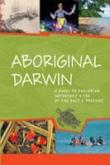'To most visitors and locals, Darwin is a vibrant, tropical city in the Top End. Although not always obvious to visitors, Darwin is also a living Aboriginal cultural landscape. This book peels back layers to show the rich heritage and complex cultures of Aboriginal people, both before and since colonisation. It includes contemporary and historical sites that range from the harbour to the beaches, monsoon forests, gardens, parks, camping places, exhibitions, cultural displays and buildings in the CBD, supplemented by information about sites not accessible to visitors.' (Source: Publisher's website)
 7186379079013445876.jpg
7186379079013445876.jpg
 Aboriginal Darwin : A Guide to Exploring Important Sites of the Past and Present
single work
Indigenous story
Aboriginal Darwin : A Guide to Exploring Important Sites of the Past and Present
single work
Indigenous story

